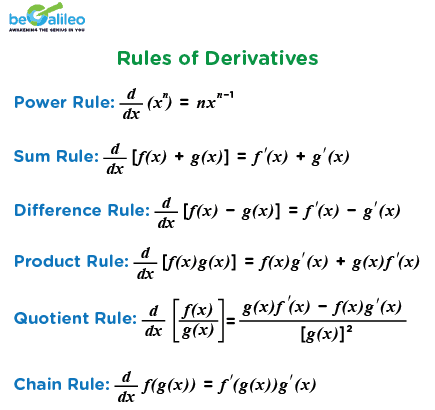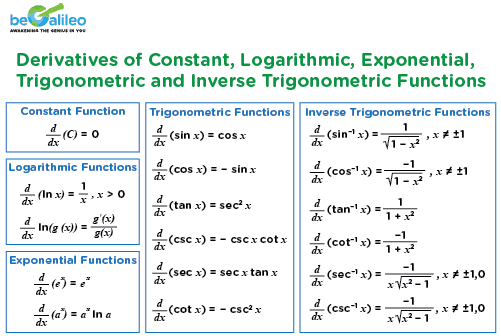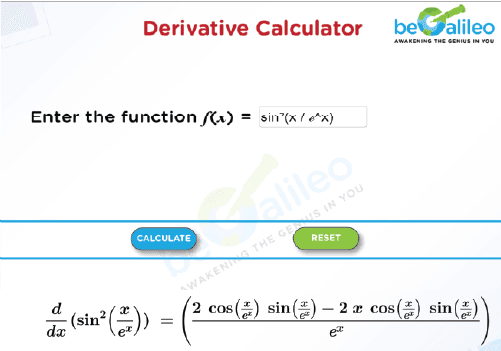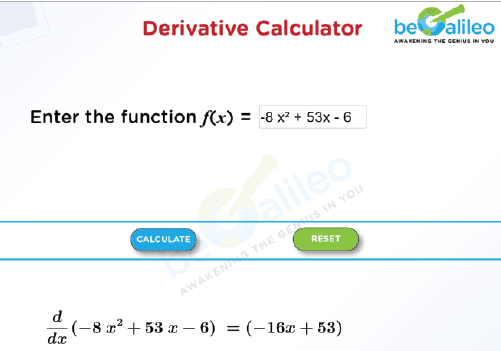The Derivative Calculator is a powerful online tool designed to calculate and simplify the process of finding derivatives. The derivative calculator deals with complex derivatives, a fundamental concept of calculus.
In mathematics, a derivative is a concept from calculus that represents the rate at which a function's value changes as its input changes.
When graphed, the derivative at a specific point corresponds to the slope of the tangent line to the function's curve at that point. This slope indicates how steeply the function is increasing or decreasing at that precise location.
Derivatives have numerous applications. They are used to solve problems involving rates of change in various fields such as physics, engineering, economics, and biology. In practical terms, derivatives can help determine the speed of a moving object, the rate of reaction in chemistry, the marginal cost in economics, or the rate of growth in a biological population, among other examples.

How to use the derivative calculator?
Input
Enter the mathematical function for which you want to find the derivative. Make sure that your function is correctly formatted and uses the variable ‘x’ in the function.

The calculator supports a wide range of functions, including polynomial, trigonometric, exponential, and logarithmic functions.
Calculation
Click “CALCULATE” and the first derivative of the given function will be shown.
Reset
ResetClick on “RESET” to start with the new calculation to avoid computing errors in the new calculation.
How to find the derivative of a function?
The derivative is a fundamental concept in calculus that provides a precise way to understand how the values of functions change when their input values change. There are some general rules followed for the derivation.

We also have some special functions and their derivatives. They can be tabulated as:

Solved Examples
1. Find the derivative of
Solution: We can use the quotient rule:
Where, and
Therefore, and
So, the derivative is:

2. Find the derivative of
Solution: Let,
Taking the derivative:
So,

Frequently Asked Questions
What age group is beGalileo designed for?
Can I try beGalileo before committing to a package?
What is the difference between self-paced and live class options in beGalileo?
How can beGalileo support homeschooling parents?
What curriculum does beGalileo follow?
How can I track my child's progress?
What is the frequency and duration of beGalileo tutoring classes?
Can beGalileo's program be customized for my child's specific learning requirements?
Can your teachers teach topics covered in my child's school curriculum?
Can my child join beGalileo anytime during the year?
What if I am not satisfied with beGalileo's classes after enrolling?
How do I enroll for beGalileo's classes?





